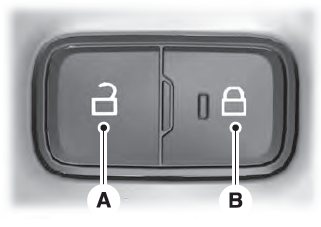Lincoln Aviator: Exhaust System - 3.0L EcoBoost / Description and Operation - Exhaust System - Overview
Overview
NOTICE: Do not use leaded fuel in a vehicle equipped with a catalytic converter. In a vehicle that is continually misfueled, the lead in the fuel will be deposited in the catalytic converter and completely blanket the catalyst. Lead reacts with platinum to "poison" the catalyst. Continuous use of leaded fuel can destroy the catalyst and render the catalytic converter useless. The addition of lead to the catalytic converter can also solidify the catalyst, causing excessive back pressure in the exhaust system and possibly causing engine damage.
NOTICE: Extremely high temperatures of 1,100°C (2,012°F) or above due to misfiring or an over-rich fuel/air mixture will cause the ceramic substrate to sinter or burn, destroying the catalytic converter. Do not continue to operate the vehicle if the engine is misfiring, there is a power loss or other unusual operating conditions, such as engine overheating and backfiring.
NOTICE: Do not use oil or grease-based lubricants on the isolators. These lubricants may cause deterioration of the rubber. This can lead to separation of the isolator from the exhaust hanger bracket during vehicle operation.
The exhaust system provides an exit for exhaust gases and reduces engine noise by passing exhaust gases through the catalytic converters and a muffler assembly. The catalytic converters also play a major role in reducing air pollutants.
- two catalytic converter assemblies
- two exhaust flexible pipes
- a central resonator assembly - with a passive valve (if equipped)
- two rear mufflers
- isolators between the the muffler and tailpipe assemblies and the vehicle body
The catalytic converter plays a major role in the emission control system by operating as a gas reactor. Its function is to speed the heat-producing chemical reaction of components in the exhaust gases to reduce air pollutants.
The catalyst material inside the catalytic converter consists of a ceramic substrate.
The catalytic converter is designed to provide a long life. No maintenance is necessary.
The exhaust passive valve opens and closes mechanically based upon engine exhaust pressure and aides in the acoustic tuning of the exhaust system. If equipped, the valve requires no maintenance and is serviced as part of the muffler and tailpipe assembly.
Sound insulators and shields, attached to the underbody, protect the vehicle from exhaust system heat and should be inspected at regular intervals to make sure they are not dented or out of position. If a sound insulator and shield is damaged or shows evidence of deterioration, install a new insulator and shield. The sound insulators and shields for the muffler, muffler pipe and catalytic converter pipe are installed separately.
Some exhaust fasteners must be discarded and new ones installed as indicated in the procedures. Discard any damaged or heavily corroded fasteners and install new ones as necessary. Some exhaust fasteners are of a prevailing torque design. Use only new fasteners with the same part number as the original. Tighten the fasteners to the specified torque during reassembly to make sure of correct retention of exhaust components.
Other information:
Lincoln Aviator 2020-2026 Service Manual: Description and Operation - Direct Current/Direct Current (DC/DC) Converter Control Module - System Operation and Component Description
System Operation System Diagram - DCDC Item Description 1 Ignition Switch 2 PCM 3 SOBDMC 4 BCM 5 BECM 6 DCDC 7 High Voltage/Low Current Fuse 8 12V Battery Monitoring Sensor Network Message Chart DCDC Network Input Messages Broadcast Message Originating Module Message Purpose DCDC HEV wake up enable BECM, BCCM (battery charger control module) ( PHEV only) Command to enable the DCDC DCDC HEV wake up enable SOBDMC Hard wired command to enable the DCDC High voltage input SOBDMC Voltage measured at SOBDMC used to compare with voltage at the DCDC...
Lincoln Aviator 2020-2026 Service Manual: Description and Operation - D Clutch
Overview Item Description 1 SSD 2 D clutch control valve 3 Clutch gain control valve 4 D clutch apply circuit 5 D clutch piston 6 D clutch assembly 7 Planetary carrier No...
Categories
- Manuals Home
- Lincoln Aviator Owners Manual
- Lincoln Aviator Service Manual
- Resetting the System
- Description and Operation - Body and Frame
- Keyless Entry
- New on site
- Most important about car
Locking and Unlocking the Doors from Inside

Locking the Doors
Press the lock switch on the door interior trim panel. The doors can no longer be released using the exterior door handle switches and the luggage compartment locks.


